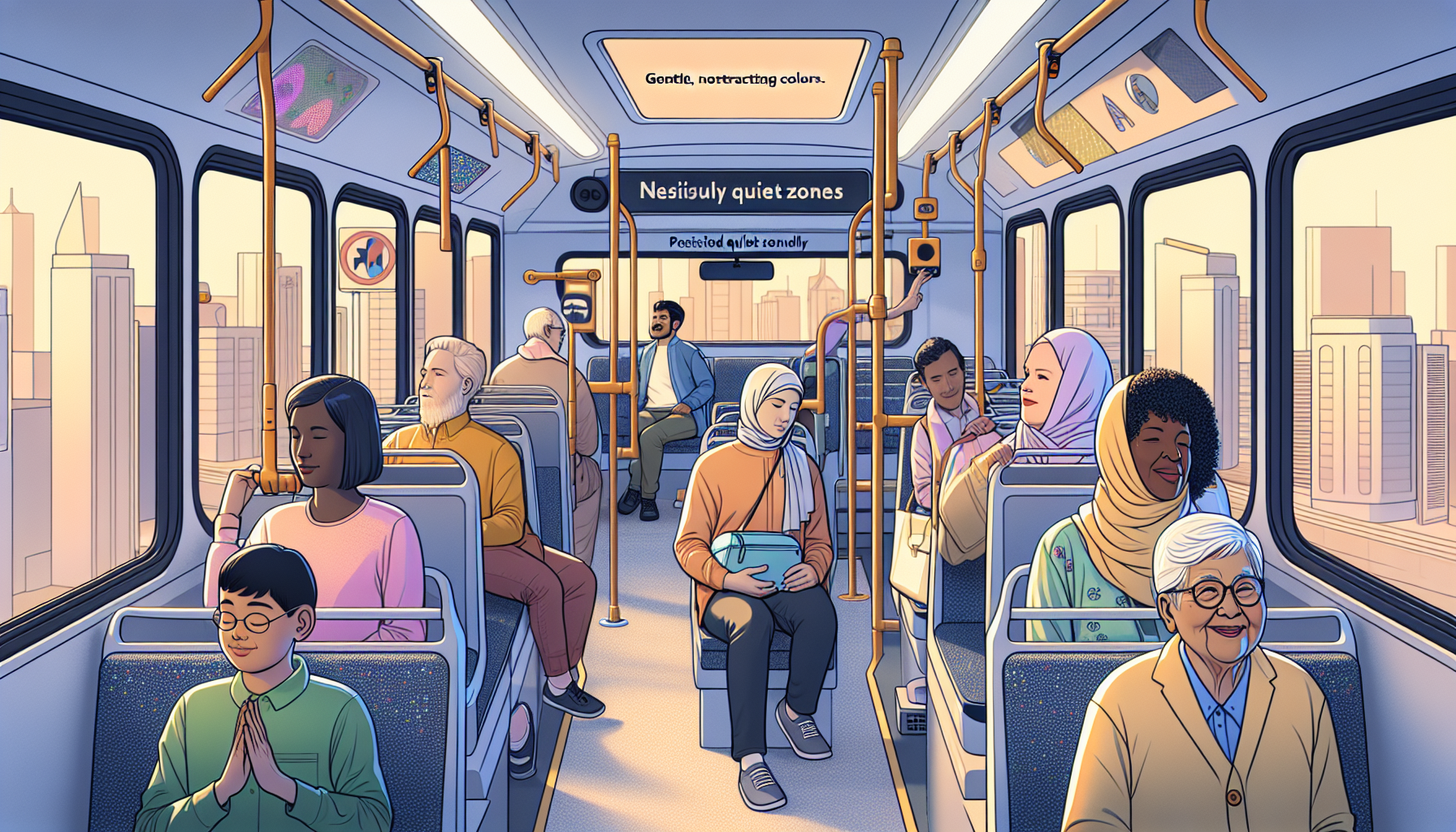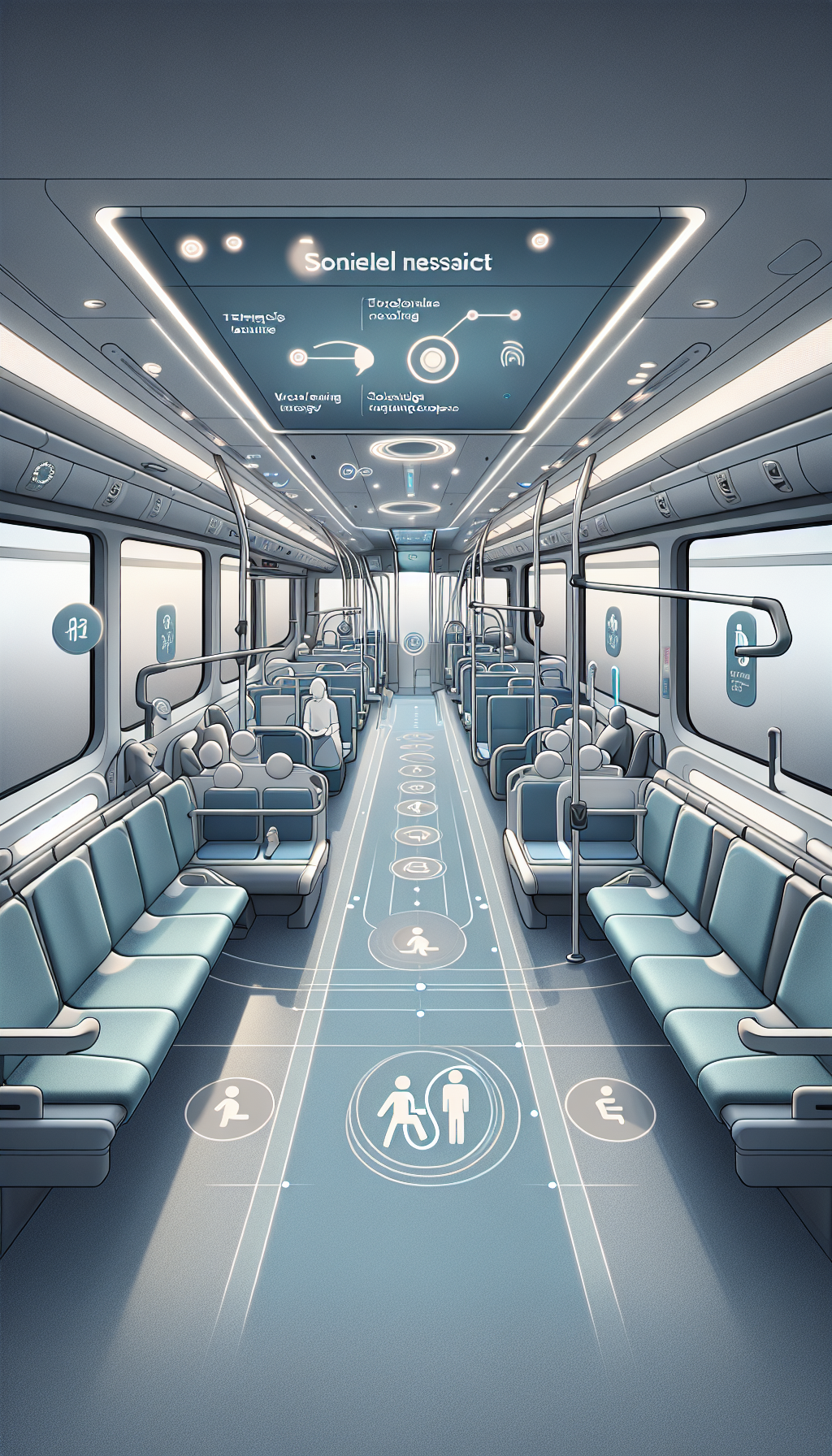Public transportation is a lifeline that connects individuals to their jobs, education, healthcare, and community activities. However, for people with sensory processing disorders (SPD), autism spectrum disorder (ASD), or other conditions that affect sensory integration, navigating buses, trains, and subways can be overwhelming. To foster inclusivity and accessibility, it’s essential to implement sensory-friendly solutions that cater to the diverse needs of all passengers.
Understanding Sensory Processing and Public Transportation
Sensory processing refers to the way the nervous system receives messages from the senses and turns them into appropriate motor and behavioral responses. For some individuals, sensory information can be too intense, leading to discomfort, anxiety, or even pain. Public transportation environments, characterized by loud noises, bright lights, and crowded spaces, can exacerbate these challenges and create barriers to mobility.
Recognizing the importance of sensory health is the first step toward creating a more inclusive public transportation system. By understanding the unique experiences of those with sensory sensitivities, transit authorities and planners can design services that are more comfortable and less distressing for all users.
Strategies for Sensory-Friendly Public Transportation
Noise Reduction and Control
Noise is a common trigger for individuals with sensory sensitivities. Reducing the volume of announcements, implementing noise-cancellation technologies, and providing quiet zones can make a significant difference. For example, sound-absorbing materials in the construction of vehicles and stations can minimize the impact of loud, sudden noises.
Visual Cues and Lighting
Bright, flickering lights can be disorienting. Using softer, non-fluorescent lighting and clear visual cues can help passengers navigate the space more comfortably. Signage with simple iconography and high contrast can guide travelers more effectively than complex text-heavy directions.
Training and Awareness Programs
Staff training is critical to ensure that transit employees are equipped to assist passengers with sensory sensitivities. Programs focused on awareness and best practices can help staff recognize signs of sensory overload and respond with empathy and support.
Designated Sensory-Friendly Spaces
Creating dedicated areas within stations and vehicles that offer a reprieve from sensory stimuli can be invaluable. These spaces, equipped with calming features such as muted colors, soft furnishings, and reduced noise levels, provide a safe haven for passengers who need a moment to regroup.
Use of Technology
Technology can be a powerful tool in creating a more sensory-friendly experience. Apps that provide real-time updates, navigation assistance, and the ability to alert staff to a passenger’s needs can empower those with sensory challenges to travel with confidence.
Community Involvement
Involving the community, especially individuals with sensory sensitivities, in the planning and feedback process helps ensure that solutions are effective and meet the actual needs of users. Listening to personal experiences and incorporating suggestions can lead to innovative and practical improvements.
Relevant Resources and Further Reading
For those interested in deepening their understanding of sensory-friendly environments and practices, consider exploring these external resources:
- The Sensory Processing Disorder Foundation offers comprehensive information on sensory processing challenges and strategies to address them.
- The National Autistic Society provides guidelines and resources for creating autism-friendly spaces, including public transportation.
- Project Action has developed toolkits and training materials specifically for transportation providers, aimed at improving accessibility for all passengers.
Related Articles on Sensory Health
Avix Health has a wealth of articles that delve into the various aspects of sensory health and its implications for daily life:
- Learn about the role of sensory diets in managing ADHD symptoms and how tailored activities can promote focus and calmness in "The Role of Sensory Diets in Managing ADHD Symptoms".
- Discover the importance of sensory awareness in personal growth and emotional development in "The Importance of Sensory Awareness in Personal Development".
- Gain insights into creating sensory-friendly healthcare environments to support patient comfort in "How to Create Sensory Friendly Spaces in Healthcare Settings".
Conclusion
As society strives for greater inclusivity, it is essential to recognize the diverse needs of all public transportation users. Implementing sensory-friendly solutions is not just about accommodation; it’s about fostering an environment where everyone has equal access to the opportunities that mobility provides. Through thoughtful design, staff training, and the use of technology, we can create public transportation systems that are welcoming and accessible to all.



